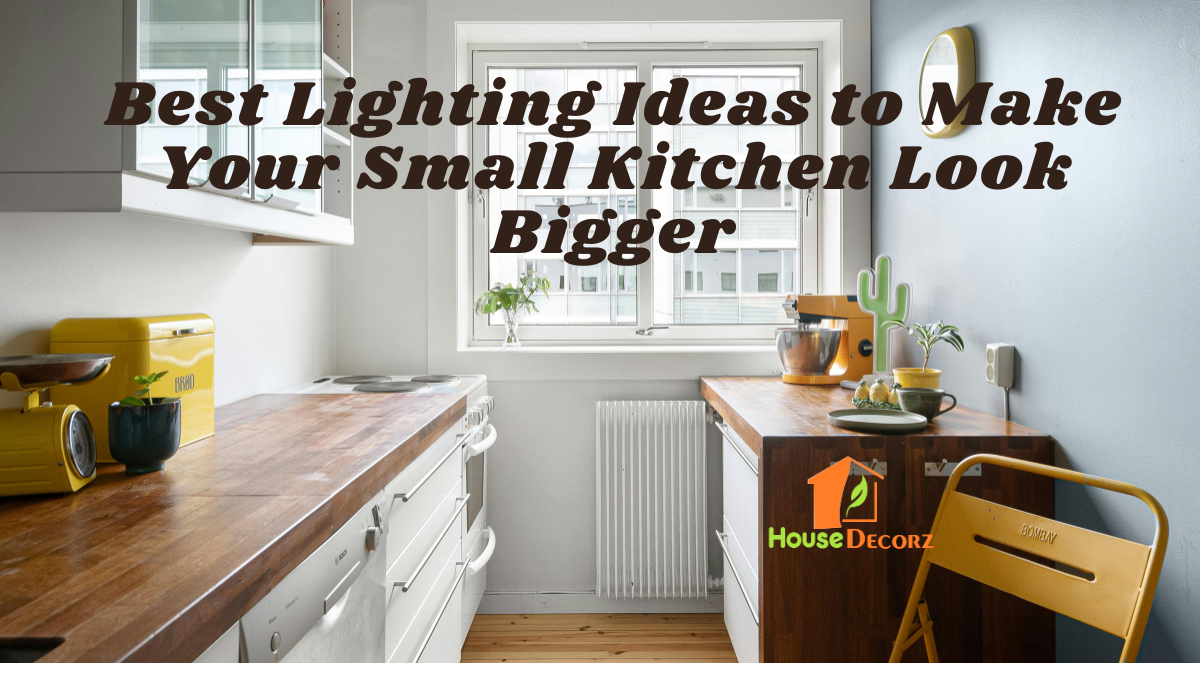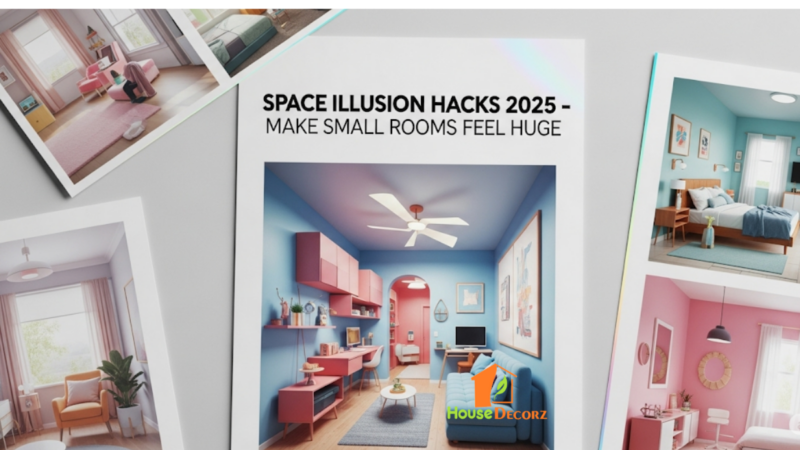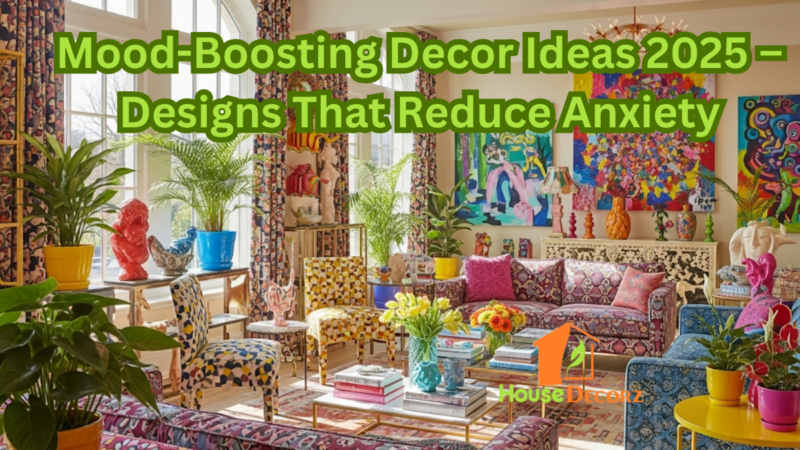Best Lighting Ideas to Make Your Small Kitchen Look Bigger

A well-lit kitchen isn’t just about visibility—it’s about perception. The right lighting can dramatically transform how large and welcoming a small kitchen feels.
Whether you live in a studio apartment or a compact city home, applying the best lighting ideas for small kitchens can make your culinary space feel open, airy, and stylish.
This guide breaks down space-enhancing lighting strategies, with practical kitchen light hacks, expert insights, and real-world applications to help you design a kitchen that feels bigger than it is.
Step 1: Understand How Lighting Affects Space Perception
Historically, architects and interior designers have used lighting to alter how a room feels. Just as mirrors create the illusion of depth, layered lighting can expand a small kitchen visually.
Three types of lighting to know:
- Ambient Lighting: The main source of light that sets the tone of the room.
- Task Lighting: Focused light that illuminates work areas like countertops and stovetops.
- Accent Lighting: Decorative lighting that adds depth and highlights design features.
In small kitchens, the goal is to create a balance of these three while maximizing brightness and minimizing shadows, which can shrink a space.
Step 2: Prioritize Natural Light First
Before diving into artificial solutions, examine your kitchen’s natural light potential. A window, skylight, or even a small glass panel can work wonders.
Enhancing natural light in compact kitchens:
- Use sheer curtains or frosted glass to diffuse sunlight without blocking it.
- Opt for reflective surfaces like glossy tiles or quartz countertops to bounce natural light.
- Keep window sills and ledges uncluttered to allow maximum light flow.
Natural light not only enlarges the space visually but also improves mood and energy efficiency.
Step 3: Use Layered Lighting to Open Up the Space
Layered lighting isn’t just a luxury—it’s a strategic approach for compact spaces.
Best layered lighting ideas for small kitchens:
- Recessed ceiling lights: These provide general illumination without eating into vertical space.
- Under-cabinet lighting: Helps eliminate dark corners and highlights countertops for practical use.
- Toe-kick lights: Installed at the base of cabinets, they create a floating effect and add depth.
- Pendant lights: Hung over breakfast bars or islands, they add height variation and visual interest.
Pro tip: Choose LED lights with high CRI (Color Rendering Index) and adjustable brightness to mimic daylight.
Step 4: Choose the Right Color Temperature
Light color temperature plays a critical role in how your kitchen feels.
Light temperature guide:
- Cool white (4000K–5000K): Best for task lighting. Makes small spaces feel clean and crisp.
- Warm white (2700K–3000K): Suitable for ambient lighting. Adds coziness but can make a space feel smaller if overused.
- Daylight (5000K+): Ideal for rooms with little to no natural light.
A mix of warm and cool tones can strike a balance between comfort and functionality in compact kitchens.
Step 5: Use Reflective and Strategic Fixtures
Fixtures don’t just light up your kitchen—they add to the design. Choosing the right ones can enhance light distribution.
Top kitchen light hacks using fixtures:
- Install mirror-backed sconces to reflect and amplify light.
- Choose metallic or glass pendant lights to allow light to pass through or reflect.
- Use open or wire-frame fixtures to avoid visual bulk and create an airy look.
- Avoid large, dark lampshades that can obstruct and absorb light.
Step 6: Think Vertically and Compact
In tight spaces, vertical lighting can make all the difference.
Compact space lighting ideas:
- Use wall-mounted swing-arm lights to save counter space.
- Add vertical LED strips on the sides of cabinets or shelves to elongate walls visually.
- Install overhead track lighting with adjustable heads to direct light where it’s needed most.
Going vertical helps emphasize height and adds dimension to an otherwise flat space.
Expert Insight
Interior lighting specialist Vinod Gill, who consults on urban kitchen projects, shares:
“Small kitchens benefit most from lighting that multitasks—think dimmable LEDs or color-changing options that shift with your cooking and entertaining needs. A layered, adjustable system is the secret to a kitchen that feels dynamic rather than cramped.”
Recommendation
Best Lighting Ideas to Make Your Bedroom Cozy
How to Style Open Kitchen Shelves Like a Pro
10 Budget-Friendly Kitchen Updates You Can DIY in a Weekend
Frequently Asked Questions (FAQ)
Q1: What is the most effective lighting for small kitchens?
A1: A combination of recessed ambient lighting, under-cabinet task lighting, and reflective accent fixtures creates a bright, spacious feel.
Q2: How can I make my small kitchen feel brighter without major renovations?
A2: Add under-cabinet LED strips, swap bulbs for daylight-tone LEDs, use reflective surfaces, and reduce visual clutter.
Q3: Are warm or cool lights better for compact kitchens?
A3: Cool white light is generally better for small kitchens as it mimics natural light and enhances visibility, making the space feel larger.
Q4: How do I incorporate lighting if I have no ceiling access?
A4: Use plug-in wall sconces, battery-powered under-shelf lights, and floor or counter-based uplighting to create layered effects without rewiring.
Final Thoughts
A well-lit kitchen is both beautiful and functional. When dealing with compact layouts, the best lighting ideas for small kitchens focus on maximizing brightness, creating depth, and ensuring every nook is useful and inviting.
Whether you’re applying simple kitchen light hacks or investing in layered compact space lighting, your small kitchen can shine just as brightly as a spacious one—literally and figuratively.






